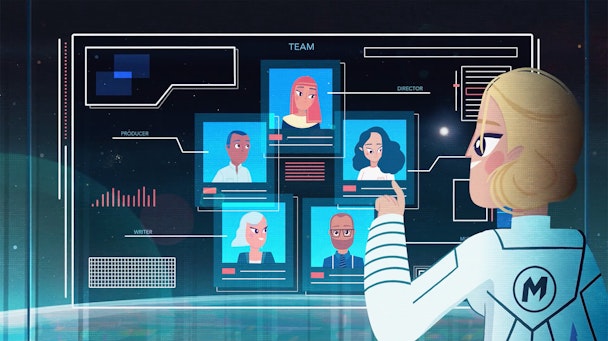A guide to hiring 2D animators: what to look for and why
At Movidiam, we see briefs coming in for animators more and more, whether it’s in-house at agencies, inside brand studios, or to handle individual projects from beginning to completion.

If you’ve not worked in creating animation, it can be tough to know what to look for in commissioning animated content, but as demand for content increases, it’s likely that marketers will find they’ve got no choice but to explore adding animation to their content armoury.
Both two-dimensional and three-dimensional animators have nuances and understanding their experience is paramount. For more specific briefs, it can serve best to consider style and scope before anything else; an animator with a decade’s experience in the wrong technique will create work less effective than a recent graduate with the ideal skillset. It’s a funny discipline in that way. To get more specific, here are three kinds of animation and how to grade an animator’s reel for proficiency in each.
Motion graphics
Above all else, motion should be pleasing to the eye. Shapes that move comfortably from position to position and are snappy in transitions. If hiring to design visual assets, objects and characters should be well-drawn — and, in a peculiarity to motion graphics, unambiguous and simplified, in order to foster direct communication of function and form to the viewer as quickly as possible. In terms of animation direction, information arrives as it’s demanded by the dialogue, narration or subtitles.
Frame-by-frame
Above all else, hand drawn animation values artistic proficiency, which is why it’s the most expensive of the three types listed in this article. Motion, if not aiming for abstracted visuals or a choppy, low-frame-rate (less than one image per every third frame at 25 frames-per-second), should be smooth and natural, especially in animals or people. Watch out for characters bending or warping at odd angles to simulate movement — these are 'bones', software-generated artificial joints the artist has embedded in drawings which were not designed to move or deform, and are queasy to look at because they are a kind of cheat code. This sidesteps the need for rigging a character, which we see next in 2D digital puppet animation, but is arguably not acceptable in frame-by-frame animation.

Puppet animation
Don’t let the name fool you; the puppet here is a digital scaffold beneath a hand-drawn character, rigged over a number of days to behave realistically when animated. To check if animation is puppeted/boned, look for still segments of characters or animals that do not change artistically while other elements move, flail, and deform. These puppet joints are designed to allow an animator to move the character quickly from pose to pose, streamlining the process immensely.
There are aspects of hand drawn/frame-by-frame in digital, and vice versa, but overall in 2D puppet animation — see work listed as being created in software called Flash, Cel Action, Anime Studio or Toon Boom — look for satisfying (if not necessarily realistic) character motion at a high frame rate, eg one drawing for every one or two frames at 25fps.
In all the above cases, a basic understanding of colour should be present, with colours fitting the theme/tone of the work, while the palette’s individual grades should stay harmonic. In addition, when discerning parts of a reel you like best, be sure to ask an animator which element of those parts they created — usually these are labeled in-reel or in the video’s text description, but if not it’s safest to double check.
A good example of a well executed Puppet Animation, complete with comprehensive colour theme and harmonic grades is one of our early brand videos, created by animation studio Wevoke.
Watch it here:
Hiring an animator can be a complex task for the uninitiated, but by using the above guide, combined with knowing which animation style you desire (with video references on-hand), you may find it less daunting. Of course, then there's hiring 3D animators...
Casper Horton-Kitchlew is partnerships lead at Movidiam
Content by The Drum Network member:

Movidiam
We provide a smarter way to hire for video and advertising campaigns. With demand for quality content rising, Movidiam enables frictionless access to a curated world-class...
Find out more